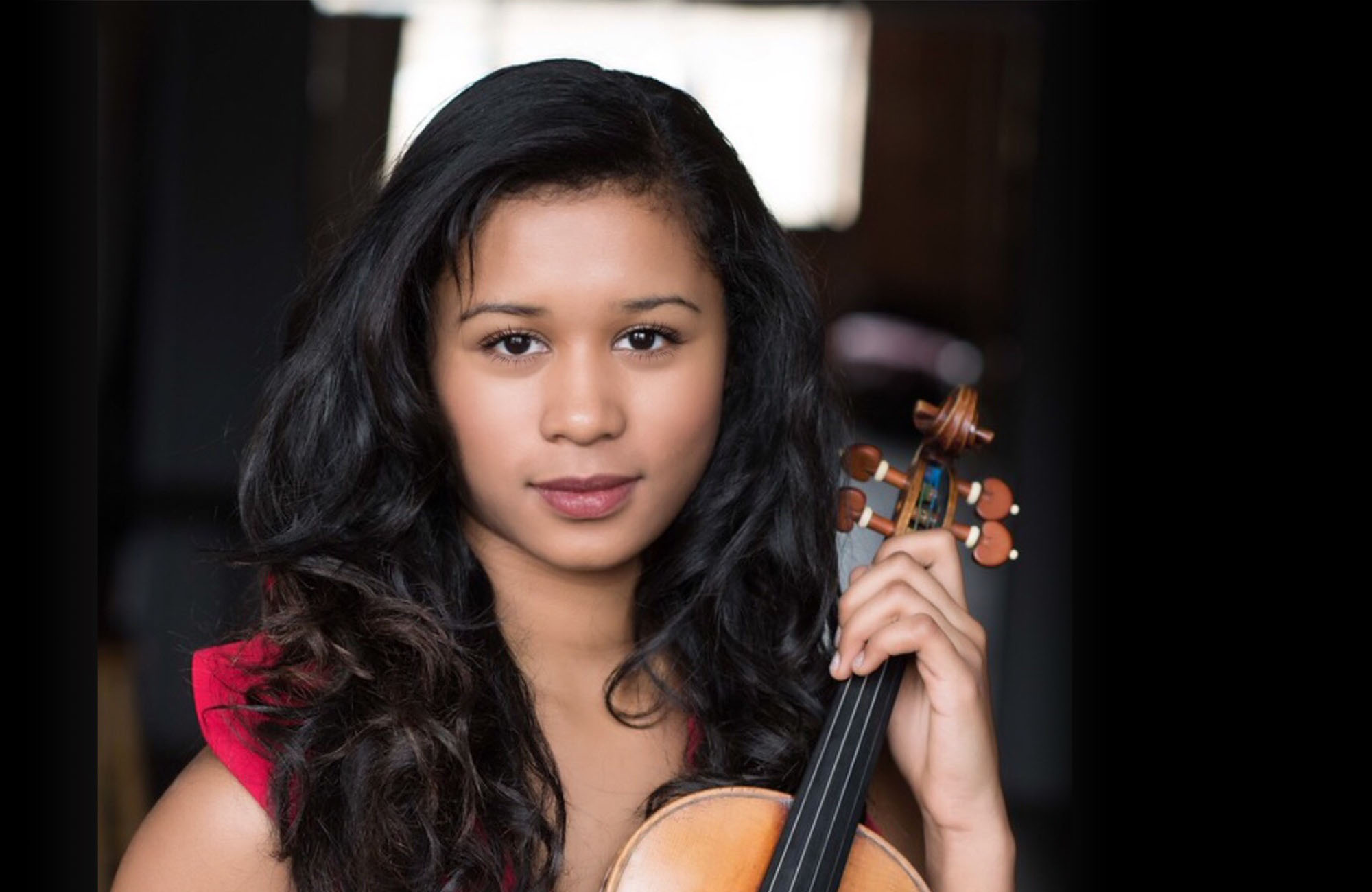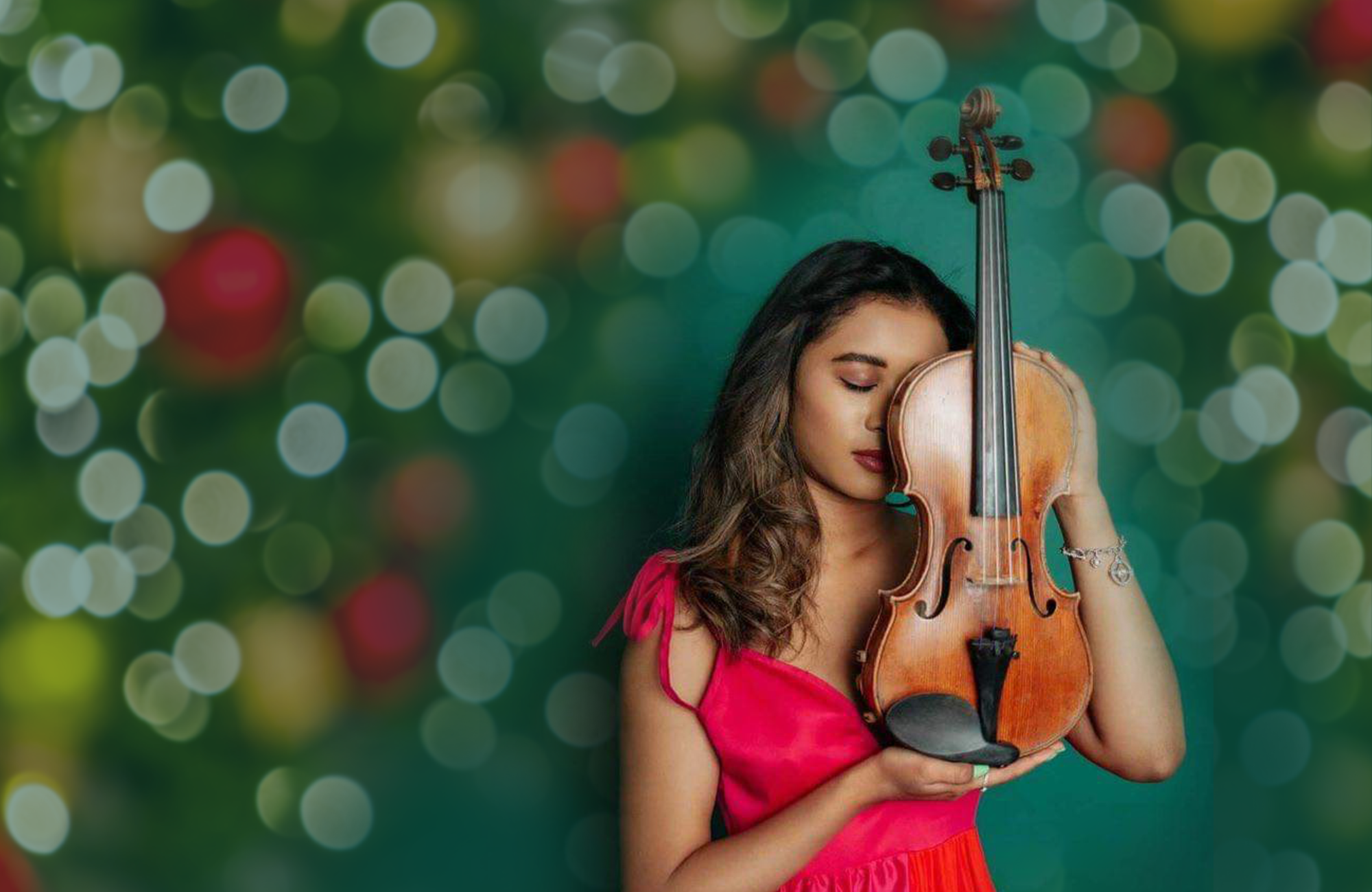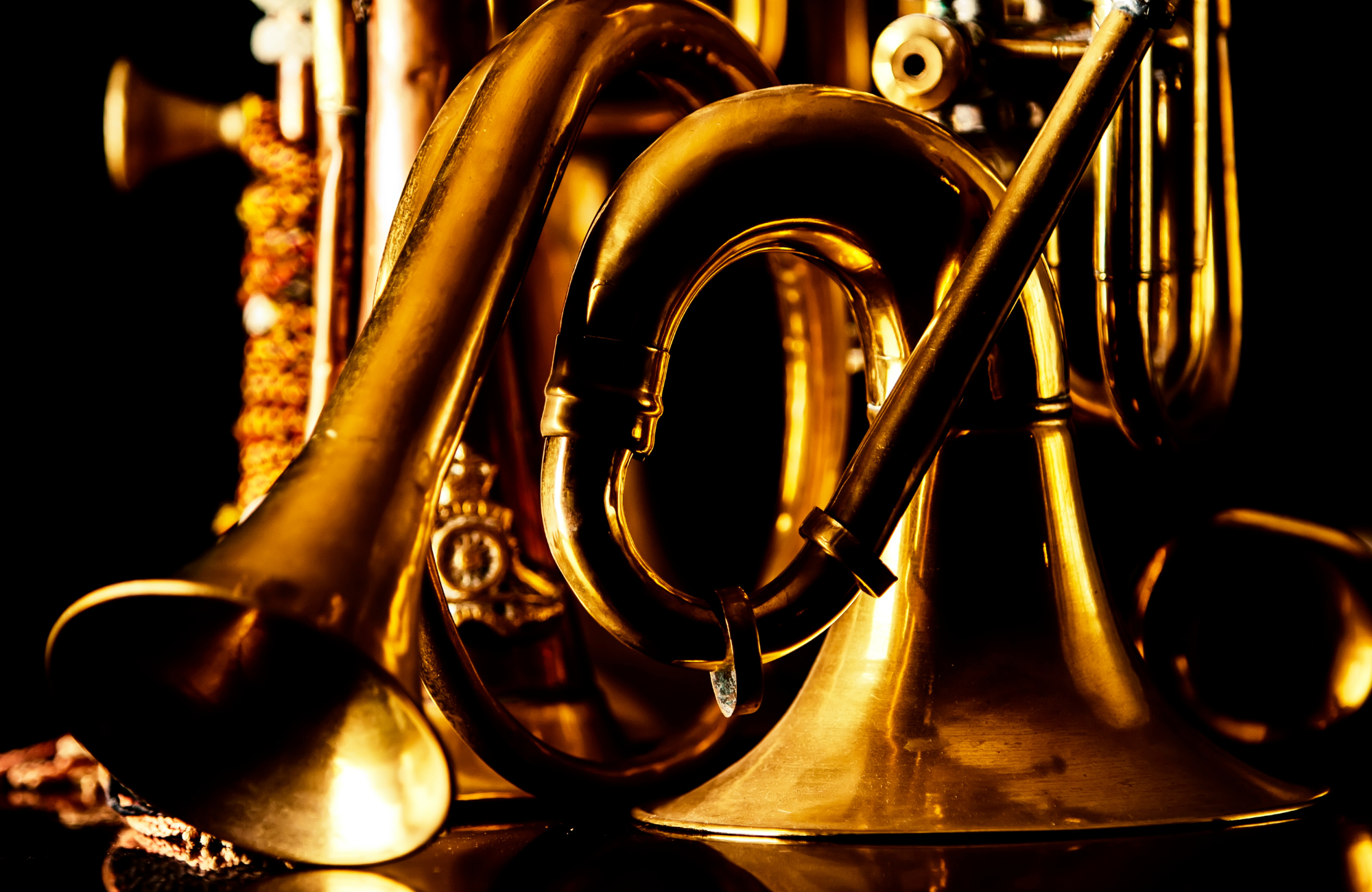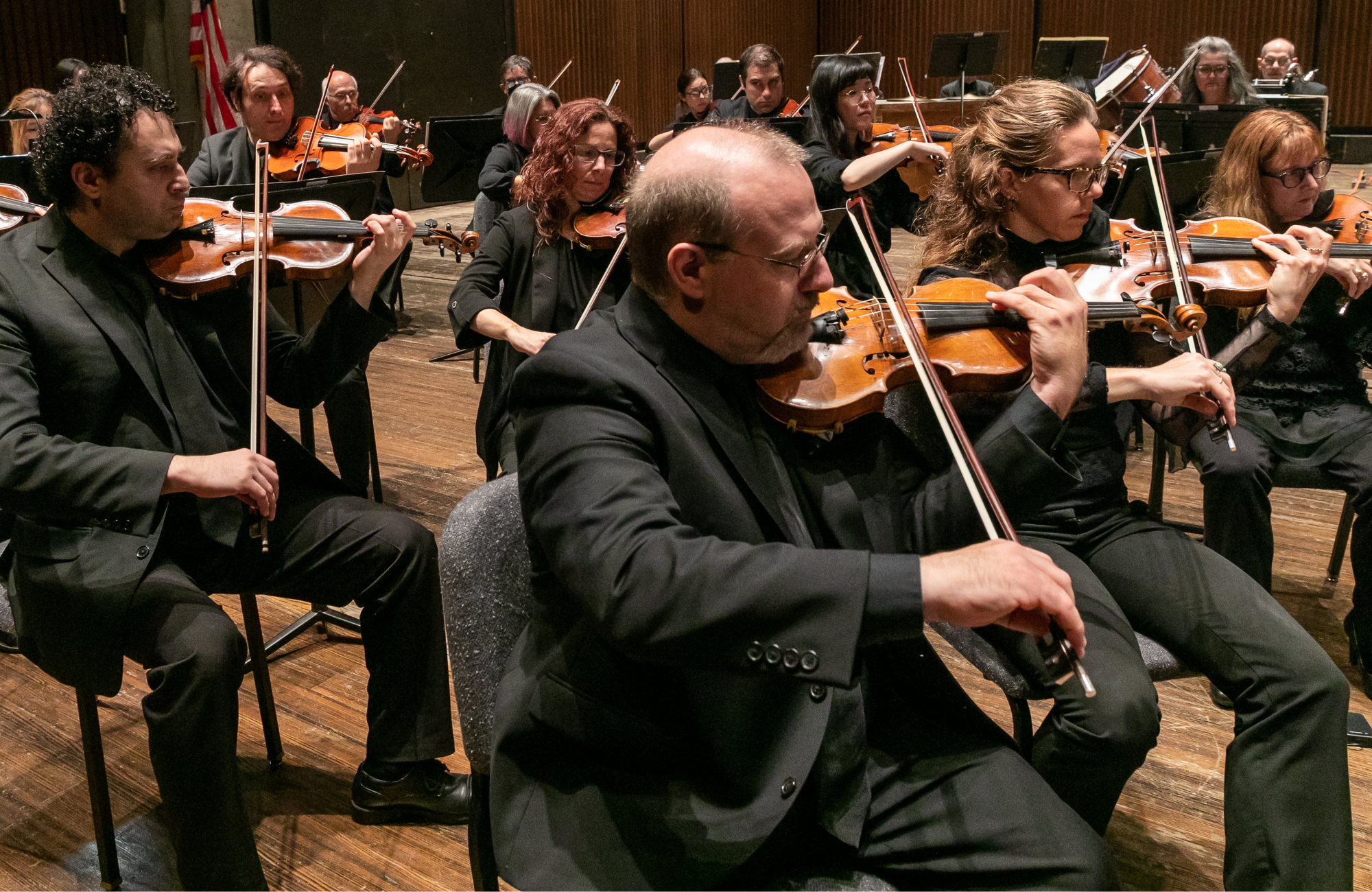Hannah White returns to perform Mozart’s Straussburg with Symphoria. At age nine, Hannah began performing with the Milwaukee Symphony Orchestra, and she has traveled the globe dazzling audiences ever since. The concert begins with music composed by Jessie Montgomery, and Schumann’s Spring Symphony rounds out the afternoon.
PROGRAM
MONTGOMERY: Strum ![]()
MOZART: Concerto for Violin in G major, No. 3, K.216 (Strassburg) ![]()
SCHUMANN: Symphony No.1 in B-flat major, Op. 38 (Spring) ![]()
*NO INTERMISSION
Thanks to our sponsors for this performance!
PROGRAM NOTES
Violinist Hannah White’s previous appearance with Symphoria was in 2021, on our “Spring in April” concert. This year, she joins us in November—but spring is still in the air.
Of the three works this afternoon, the one with the most obvious connection to spring is the Symphony No. 1(known as the “Spring Symphony”) by Robert Schumann (1810–1856). Familiar nicknames for famous pieces (for instance, Mozart’s “Jupiter” Symphony) are regularly coined by someone other than the composer, often after his or her death. In this case, the sobriquet comes ...
Violinist Hannah White’s previous appearance with Symphoria was in 2021, on our “Spring in April” concert. This year, she joins us in November—but spring is still in the air.
Of the three works this afternoon, the one with the most obvious connection to spring is the Symphony No. 1(known as the “Spring Symphony”) by Robert Schumann (1810–1856). Familiar nicknames for famous pieces (for instance, Mozart’s “Jupiter” Symphony) are regularly coined by someone other than the composer, often after his or her death. In this case, the sobriquet comes from Schumann himself. (In fact, each movement originally had a subtitle referring to the season, although Schumann removed them from the score before it was published.) Like much of Schumann’s best music, it burst forth in an astonishing surge of activity. He wrote the Cello Concerto, which we performed at our last Masterworks concert, in just two weeks; the First Symphony is even more remarkable, sketched out in a mere four days. Surprisingly, given its sunny spirit, it was composed in the dead of winter, in January 1841. But Schumann was elated by his recent marriage to Clara Wieck, and the result was a vernal character that would be evident even without hia verbal hints.
The Symphony begins with a luminous introduction, perhaps an announcement of the coming of spring, with the trumpets calling from “on high” (as Schumann put it in a letter to conductor Wilhelm Taubert), leading to “the world’s turning green.” Yes, there are shadows here and there, especially in the more regretful moments of the lyrical second movement Larghetto (“fairly slow’); there are also momentary flashes of severity in the dynamic Scherzo that follows. But the work as a whole is open-hearted and optimistic. Schumann often distinguished two aspects of his personality with the names Eusebius (representing his pensive, more melancholy side) and Florestan (his bright, extroverted side). In this work, Florestan is clearly dominant, especially in the uplifting finale.
One of the most striking aspects of the First is its apparent effortlessness. Especially for composers living in Germany and Austria, writing symphonies in the shadow of Beethoven was no easy matter. Beethoven provided inspiration, revealing what could be done within the genre. At the same time, he created an obstacle by setting a standard that was hard to meet. Brahms, famously, waited until he was in his forties before he could write his First Symphony. Liszt turned to symphonic poems rather than symphonies modeled after Beethoven (the two pieces he wrote with the title “symphony” were both programmatic works that resisted the Beethoven paradigms). The young Wagner made a couple of paltry symphonic efforts (only one was completed) and then turned to opera.
But there’s neither hesitency nor strain in Schumann’s First. How did he manage it? One widespread theory is that Schumann’s success with the genre was boosted by his discovery of Schubert’s “Great” C Major Symphony, nowadays usually counted as his Ninth. Schumann was largely responsible for the revival of this once-forgotten work, bringing back a copy for Mendelssohn to premiere in 1839, and writing a review in 1840 that helped cement its reputation. In particular, it was Schubert’s reliance on large-scale lyricism that seems to have inspired Schumann and given him a way of getting past Beethoven’s ghosts. In any case, the First Symphony is struck through with undeniable confidence.
Schumann’s technical skill as a writer for the keyboard has never been in doubt; but as I mentioned in my notes for the Cello Concerto, his orchestration has often come under attack—and several conductors (most notably Weingartner and Mahler) made efforts to “improve” it. Nowadays, such interventions are normally avoided (except when a conductor is specifically trying to celebrate Mahler). True, Schumann may not have the orchestral transparency of his good friend Mendelssohn, much less the quirkiness of Berlioz or the flashiness that Liszt was to develop. Still, the music is filled with orchestral marvels, from that annunciatory opening, through the conversational play among the instrumental groups in the Scherzo, on to the magical flute cadenza ushered in by bucolic horns that interrupts the finale. And as in his beloved Schubert Ninth, the trombones are given a major role.
The Violin Concerto No. 3, K. 216 (1775) by Wolfgang Amadeus Mozart (1756–1791) has an equally solid connection to spring, although it’s slightly more circuitous, grounded in the reciprocal relation between Mozart’s operas and his orchestral works. Regular audience members may remember how frequently soloists bring up the operatic qualities of Mozart’s concertos. Talking about the Clarinet Concerto in 2018, David Shifrin pointed to the way Mozart mixed “virtuosic instrumental qualities” with “operatic, lyric vocal qualities.” And when Sarah Vonsattel performed Mozart’s Fifth Violin Concerto in 2021, she noted how her experience performing the composer’s operas in the Metropolitan Opera Orchestra influenced her understanding of the piece.
The Third Violin Concerto is operatic, too, in an even more direct sense: The opening theme of the first movement is lifted from an aria in his sightly earlier opera Il Re Pastore, K. 208. Sung by a king who believes he is a shepherd, the text (“Aer tranquillo e dì sereni, Freschi fonti e verdi prati”/“Tranquil air and serene days, cool streams and green meadows”) is a clear evocation of spring, one that inspires clearly springlike music. Does Mozart’s decision to plunder an earlier tune suggest that his imagination had stalled? Hardly. The violin version is more inventive, and launches a work notable for its melodic abundance. The finale, in particular, is a rondo (a form in which a recurring section called the “refrain” is interrupted by contrasting “episodes”), one where the shifts in tone and spirit are almost dizzyingly rich.
On Hannah’s earlier visit to Syracuse, she performed the First Violin Concerto by Joseph Bologne, Chevalier de Saint-Georges. The Saint-Georges and the Mozart Third were written at about the same time by composers sharing a strong classical aesthetic who were often associated with each other (indeed, Saint-Georges was misleadingly nicknamed “The Black Mozart”). But the concertos are very different in style. The Saint-Georges is a show-offy piece, extremely difficult to play because of what Hannah calls its “random licks, jumps and leaps.” In contrast, the Mozart is an epitome of a “classical concerto”, a work that, despite its melodic profligacy, is marked by its “stability.” In contrast to the Saint-Georges, it fits under the fingers very well.”
Hannah certainly feels its springy character: “There’s definitely a little bit that’s carefree in there, maybe even childlike.” One special feature of today’s performance: As is traditional in concertos of the period, Mozart left performers the opportunity to improvise. Nowadays, when improvisation is less common among classical performers, soloists are more likely to rely on pre-composed cadenzas. In this case, there are numerous choices, mostly written by prior violinists including Eugene Ysaÿe, David Oistrakh, and Joshua Bell. In previous performances, Hannah has used a cadenza by Rachel Barton Pine (who will, incidentally, be performing Vivaldi’s Four Seasons with Symphoria on January 27). This afternoon, she’ll be playing one by her friend John Fawcett—extremely virtuosic, but still staying close to the spirit of the rest of the Concerto.
Like the Schumann First Symphony, however, this Concerto has its less chipper side: The slow middle movement, marked Adagio (very slow), is more inner-directed. In terms of sonority, it’s softer than the rest of the Concerto, maybe even withdrawn: Mozart mutes the strings and replaces the plangent oboes with the sweeter flutes (in Mozart’s day, they would probably have been played by the same musicians). This is Hannah’s favorite movement. From her perspective, it has more depth—and, more important, it fits her character. You might not have guessed it if you heard her blazing performance of the Saint-Georges, but in fact, she says, “I’m really a quiet, introspective person, an introvert.” Hence, she says, she’s “most comfortable with what I’m doing” in music like the middle movement of the Mozart.
Like the Schumann, too, Mozart’s Third Violin Concerto has a nickname picked by the composer himself. In this case, though, its meaning is unclear. Mozart called it his “Strassburg” Concerto, but the work was neither written nor performed there. In fact, Mozart didn’t set foot in that city until three years later. It’s possible that the name comes from a tune in the finale, which may be a folk-tune of Alsatian origin—but there’s been some debate on the issue.
Our concert begins with a brief, appropriately sunny work, Strum, by Jessie Montgomery (b. 1981). Montgomery is a Symphoria favorite, having appeared every season since 2020-2021. Her knotty but affirmative Banner (2014)—which superimposes the National Anthem with a number of other folk songs and patriotic tunes to create a sense of multi-cultural community—opened our 2020-2021 season; Starburst (2012), a more self-consciously brilliant piece, opened a Casual in January 2022; and last year, we performed the New York premiere of her substantial and multifaceted Rounds, with pianist Awadaggin Pratt. Strum, originally for string quintet (2006), but later arranged for both string quartet and string orchestra (as we’ll be hearing it tonight), is one of her most widely performed compositions (in fact, you may have heard the quartet version performed by the Harlem String Quartet at a Syracuse Friends of Chamber Music Concert in April 2022). Like Rounds, it depends heavily on ostinatos (repeated musical patterns)—in this case repetitions of layered rhythmic and harmonic patterns that, as the composer puts it, “string together to form a bed of sound for melodies to weave in and out.” She continues: “Drawing on American folk idioms and the spirit of dance and movement, the piece has a kind of narrative that begins with fleeting nostalgia and transforms into ecstatic celebration.” Although the idiom is less thorny, it has a spiritual connection with Banner: Strum, too, celebrates music as “a meeting place at which all people can converse about their unique differences and common stories.”
Peter J. Rabinowitz
Have any comments or questions? Please write to me at prabinowitz@ExperienceSymphoria.org
FEATURED ARTISTS

Described as bringing an “artisan storyteller’s sensitivity… shaping passages with clarity and power via beautifully sculpted dynamics… revealing orchestral character not seen or heard before” (Arts Knoxville) Lawrence Loh enjoys a dynamic career as a conductor of orchestras all over the world.
After an extensive two ...
Described as bringing an “artisan storyteller’s sensitivity… shaping passages with clarity and power via beautifully sculpted dynamics… revealing orchestral character not seen or heard before” (Arts Knoxville) Lawrence Loh enjoys a dynamic career as a conductor of orchestras all over the world.
After an extensive two year search, Lawrence Loh was recently named Music Director of the Waco Symphony Orchestra beginning in the Spring of 2024. Since 2015, he has served as Music Director of The Syracuse Orchestra (formerly called Symphoria), the successor to the Syracuse Symphony Orchestra. “The connection between the organization and its audience is one of the qualities that’s come to define Syracuse’s symphony as it wraps up its 10th season, a milestone that might have seemed impossible at the beginning,” (Syracuse.com) The Syracuse Orchestra and Lawrence Loh show that it is possible to create a “new, more sustainable artistic institution from the ground up.”
Appointed Assistant Conductor of the Pittsburgh Symphony in 2005, Mr Loh was quickly promoted to Associate and Resident Conductor within the first three years of working with the PSO. Always a favorite among Pittsburgh audiences, Loh returns frequently to his adopted city to conduct the PSO in a variety of concerts. Mr. Loh previously served as Music Director of the West Virginia Symphony Orchestra, Music Director of the Northeastern Pennsylvania Philharmonic, Artistic Director and Principal Conductor of the Syracuse Opera, Music Director of the Pittsburgh Youth Symphony Orchestra, Associate Conductor of the Dallas Symphony Orchestra, Associate Conductor of the Colorado Symphony Orchestra and Music Director of the Denver Young Artists Orchestra.
Mr. Loh’s recent guest conducting engagements include the San Francisco Symphony, Dallas Symphony, North Carolina Symphony, Baltimore Symphony, Sarasota Orchestra, Florida Orchestra, Pensacola Symphony, Atlanta Symphony, National Symphony, Detroit Symphony, San Diego Symphony, Seattle Symphony, National Symphony (D.C.), Utah Symphony, Rochester Philharmonic, Indianapolis Symphony, Calgary Philharmonic, Buffalo Philharmonic, Albany Symphony and the Cathedral Choral Society at the Washington National Cathedral. His summer appearances include the festivals of Grant Park, Boston University Tanglewood Institute, Tanglewood with the Boston Pops, Chautauqua, Sun Valley, Shippensburg, Bravo Vail Valley, the Kinhaven Music School and the Performing Arts Institute (PA).
As a self-described “Star Wars geek” and film music enthusiast, Loh has conducted numerous sold-out John Williams and film music tribute concerts. Part of his appeal is his ability to serve as both host and conductor. “It is his enthusiasm for Williams’ music and the films for which it was written that is Loh’s great strength in this program. A fan’s enthusiasm drives his performances in broad strokes and details and fills his speaking to the audience with irresistible appeal. He used no cue cards. One felt he could speak at filibuster length on Williams’ music.” (Pittsburgh Tribune)
Mr Loh has assisted John Williams on multiple occasions and has worked with a wide range of pops artists from Chris Botti and Ann Hampton Callaway to Jason Alexander and Idina Menzel. As one of the most requested conductors for conducting Films in Concert, Loh has led Black Panther, Star Wars (Episodes 4-6), Jaws, Nightmare Before Christmas, Jurassic Park, Casablanca, The Wizard of Oz and Singin’ in the Rain, among other film productions.
Lawrence Loh received his Artist Diploma in Orchestral Conducting from Yale, his Masters in Choral Conducting from Indiana University and his Bachelor of Arts from the University of Rochester. Lawrence Loh was born in southern California of Korean parentage and raised in Carlisle, Pennsylvania. He and his wife Jennifer have a son, Charlie, and a daughter, Hilary. Follow him on instagram @conductorlarryloh or Facebook at @lawrencelohconductor or visit his website, www.lawrenceloh.com

Violinist Hannah White has soloed extensively throughout the United States and Europe. Hannah has been described by The New York Times as, “terrific… expressive… enthusiastic”, and NY Concert Review wrote “phenomenal…blaze… commanded … perfect intonation and flair”, and Cleveland.com as “clinched her Severance Hall debut…razor-sharp… future is ...
Violinist Hannah White has soloed extensively throughout the United States and Europe. Hannah has been described by The New York Times as, “terrific… expressive… enthusiastic”, and NY Concert Review wrote “phenomenal…blaze… commanded … perfect intonation and flair”, and Cleveland.com as “clinched her Severance Hall debut…razor-sharp… future is bright”.
Hannah began her solo career at age nine with Milwaukee Symphony Orchestra, and since then performed with Cleveland Symphony Orchestra, New World Symphony Orchestra, Albany Symphony Orchestra, South Bend Symphony Orchestra, Ann Arbor Symphony Orchestra, Buffalo Philharmonic Orchestra, Sphinx Symphony Orchestra, and Madison Symphony Orchestra among others. She has performed at numerous prestigious venues including: Carnegie Hall, Severance Hall, Kennedy Center, Rock and Roll hall of fame, Ordway Center, Harris Theater, New World Center, Disneyland, National Gallery of Art Museum, and Aspen Summer Camp. She has performed in England, Ireland, Scotland, and Switzerland. Recently, Hannah performed at the World Economic Forum in front of world leaders and business leaders.
Hannah has earned First Prize at dozens of competitions for solo and chamber at the local, national and international level.
Hannah has been admitted into the renowned studio of Robert Lipsett, with whom she presently studies at the Colburn Conservatory of Music.




